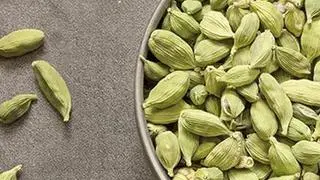The Confederation of Indian Industry has recommended measures to improve the export potential of the aquaculture sector in order to capture a major share of the global market.
To achieve this, the industry body emphasised the need to maintain production through the steady supply of seed, feed and other inputs. Indian aquaculture is an export-driven segment with 90 per cent of the production being exported. While the demand is expected to be maintained post-Covid-19, the challenge faced by farmers will be mainly in terms of meeting the demand with steady production.
The lion’s share of Indian aquaculture comprises shrimp, for which both broodstocks and larval feeds are imported. With the global lockdown situation, the supply of these has been stalled, which will have a significant impact on production, CII said in its report.
To reduce the lag time in the supply of broodstock, CII has recommended re-establishing import of broodstock by expediting air transportation from the US by arranging special cargo flights.
It is pointed out that the RGCA quarantine facility in Chennai is shut and its holding capacity is not sufficient for large consignments. Hence, the imported broodstock should be allowed to be taken to hatcheries directly and thereafter sampling can be done by RGCA. On approval, hatchery owners can be allowed to use the broodstock.
In case steady supply of broodstock and larval feed is not ensured, the report said that the supply of shrimp will be heavily impacted. This will hike up prices in both the global and domestic markets.
Looking at the challenges being faced by the aquaculture segment vis-à-vis Covid-19 crisis, CII has also proposed immediate, mid-term, and long term measures.
Power tariff, shrimp feed
Towards improving the viability and competitiveness of Indian shrimp farms, it is recommended that the power tariff be lowered to a maximum of ₹4.50 per unit since power constitutes 17 per cent of the production cost of shrimp.
Shrimp feed accounts for more than 55 per cent of the operating cost. It is recommended that the feed subsidy of ₹10 per kg of feed should be passed on to farmers through the feed mills based on the production data of the farmer or the purchase receipt of the farmers.
Given the intensive investment and industrial-scale implement usage required in aquaculture farming, the sector should be given equivalent status to MSMEs. This will also allow the credit guarantee fund trust for MSME scheme to be applicable to aqua farmers.
India is the world’s second-largest fish producer with a total production of 13.7 million tonnes in 2018-19 of which 65 per cent was from inland fishing. Almost 50 per cent of inland fish production is from culture fisheries, which constitutes 6.5 per cent of global fish production. Shrimp accounts for a majority share of India’s aquaculture, which is growing at a CAGR of 17.4 per cent over the past three years.
As a long-term measure, CII suggested developing an R&D for a nuclear breeding centre for shrimp in India.







Comments
Comments have to be in English, and in full sentences. They cannot be abusive or personal. Please abide by our community guidelines for posting your comments.
We have migrated to a new commenting platform. If you are already a registered user of TheHindu Businessline and logged in, you may continue to engage with our articles. If you do not have an account please register and login to post comments. Users can access their older comments by logging into their accounts on Vuukle.